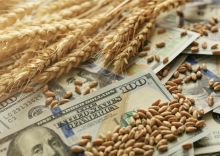USDA Bailout for Impact of Trump’s Tariffs Goes to Biggest, Richest Farmers
By Donald Carr, Senior Advisor and Chris Campbell, VP, Information Technology
TUESDAY, JULY 30, 2019

Farm bailout payments designed to offset the impacts of President’s Trump’s trade war have overwhelmingly flowed to the largest and most successful farmers, according to EWG’s analysis of the latest Department of Agriculture data.
EWG today released updated data on payments made through the first two rounds of the Market Facilitation Program, or MFP. Through April, total MFP payments for 2018-19 were $8.4 billion. The data was obtained from the USDA through a Freedom of Information Act request and has now been added to EWG’s online Farm Subsidy Database.
EWG’s analysis of the data found:
- The top one-tenth of recipients received 54 percent of all MFP payments.
- Eighty-two farmers have so far received more than $500,000 in MFP payments.
- One farm, DeLine Farm Partnership, of Charleston, Mo., has so far received $2.8 million in MFP payments.
- The top 1 percent of MFP recipients received, on average, $183,331. The bottom 80 percent received, on average, less than $5,000.
- Thousands of residents of the nation’s largest cities received MFP payments.
- MFP payments continue to leave out minority farmers.
Until now, MFP payments have been linked to crop production, favoring the largest producers of certain crops. Although USDA initially said it would place a $125,000 cap on MFP payments, the department chose to apply rules that allow relatives who do not contribute meaningful work on the farm to receive farm payments, allowing many farm businesses to evade the cap.
Changes to the second round of MFP payments, announced last week by Agriculture Secretary Sonny Purdue, will further favor the largest farmers by linking payments to the number of acres, not the number of bushels or bales produced. The bigger the farm, the bigger the government check.
MFP payments are made in addition to other farm subsidies, including multiple layers of commodity subsidies, crop insurance subsidies, and disaster payments. Nearly 28,000 farms have received subsidies from these programs for 32 years continuously.
Total subsidy payments across all programs in 2018, including MFP, totaled more than $18 billion. This means that, in combination, these payments could exceed World Trade Organization caps on farm subsidies, potentially opening a new front in Trump’s trade war. China responded to Trump’s tariffs on Chinese aluminum and steel products by placing retaliatory tariffs on more than 800 U.S. food and farm products, which led in turn to the MFP bailout program.
ABOVE IS FROM: https://www.ewg.org/agmag/2019/07/usda-bailout-impact-trump-s-tariffs-goes-biggest-richest-farmers
No comments:
Post a Comment